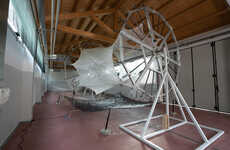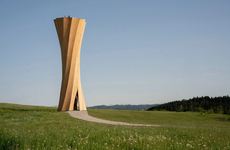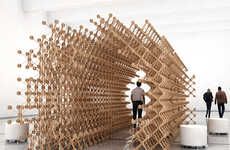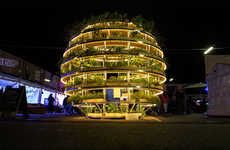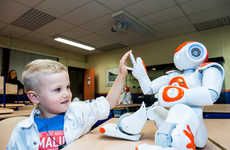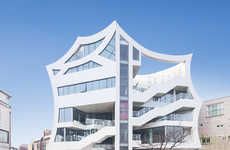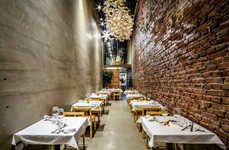
This Futuristic Canopy Will Be Constructed by Robots
Katherine Pendrill — February 4, 2016 — Art & Design
Stuttgart architect Achim Menges recently developed the designs for a futuristic canopy that will be built by robots. With many architects and engineers turning to robotics, this project demonstrates the future potential of the technology.
The robot-fabricated pavilion is part of a joint collaboration between Menges and engineers Jan Knippers and Thomas Auer. The 'Elytra Filament Pavilion' as it has been titled, will be located in the V&A museum courtyard in order to showcase the institution's Engineering Season. The pavilion itself boasts a web-like structure that resembles the wings of flying beetles. This involves creating a load-bearing canopy and an environmental filter that will evolve and transform with the space.
The futuristic canopy ultimately explores the potential of emerging robotic technologies in the fields of architecture and engineering.
The robot-fabricated pavilion is part of a joint collaboration between Menges and engineers Jan Knippers and Thomas Auer. The 'Elytra Filament Pavilion' as it has been titled, will be located in the V&A museum courtyard in order to showcase the institution's Engineering Season. The pavilion itself boasts a web-like structure that resembles the wings of flying beetles. This involves creating a load-bearing canopy and an environmental filter that will evolve and transform with the space.
The futuristic canopy ultimately explores the potential of emerging robotic technologies in the fields of architecture and engineering.
Trend Themes
1. Robotics in Architecture - The use of robots in architecture is a growing trend, creating opportunities for automated construction and innovative designs.
2. Robot-fabricated Structures - The development of robot-fabricated structures presents disruptive innovation opportunities by allowing for complex and customizable designs.
3. Exploring Robotic Technologies - The exploration and experimentation with robotic technologies in architecture and engineering offer exciting possibilities for future advancements.
Industry Implications
1. Architecture - The architecture industry can leverage robotic technologies to revolutionize the construction process and create unique and efficient structures.
2. Engineering - The engineering industry can benefit from the use of robots in constructing complex structures with precise measurements and calculations.
3. Museum and Exhibition Design - The museum and exhibition design industry can incorporate robot-fabricated structures to create visually stunning and interactive installations that push the boundaries of design.
3
Score
Popularity
Activity
Freshness

